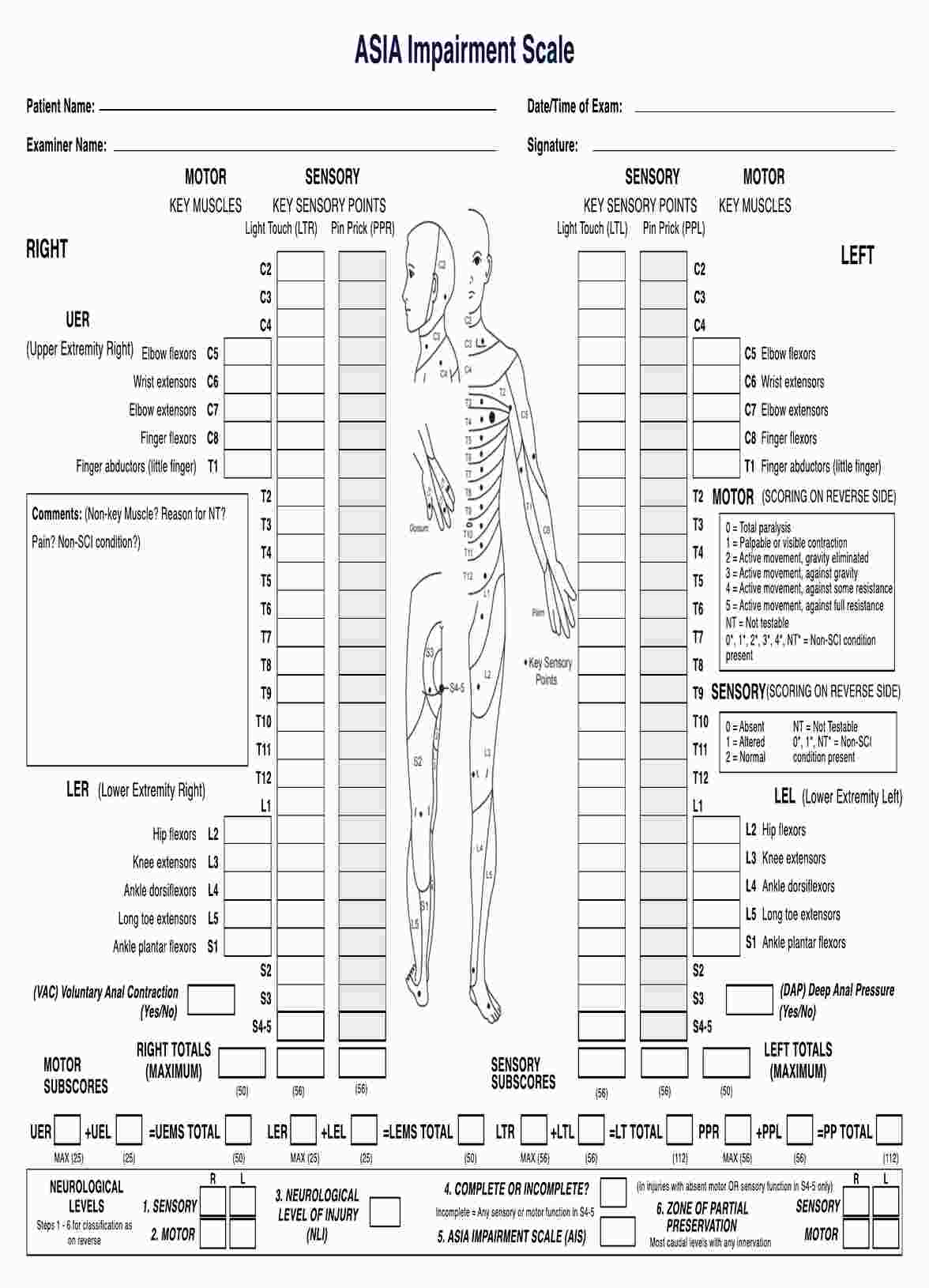The ASIA Impairment Scale does not account for other variables affecting patient outcomes, such as pain, stiffness, and psychosocial variables. It can only evaluate motor and sensory function below the degree of injury.

ASIA Impairment Scale
The Asia Impairment Scale (AIS) is a tool used to assess the severity of spinal cord injuries. Learn more about the AIS and its use in this brief overview.
Use Template
ASIA Impairment Scale Template
Commonly asked questions
The ASIA Scale can offer insight into the likelihood of recovery and rehabilitation following a spinal cord injury but cannot forecast a patient's specific recovery trajectory.
Alternatively, scales, such as the Frankel Scale, Spinal Cord Independence Measure, and Functional Independence Measure, can also be used to evaluate spinal cord injury.
EHR and practice management software
Get started for free
*No credit card required
Free
$0/usd
Unlimited clients
Telehealth
1GB of storage
Client portal text
Automated billing and online payments











